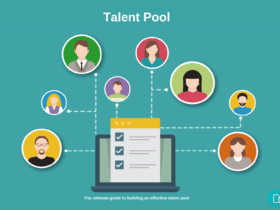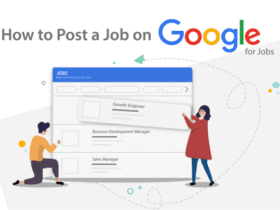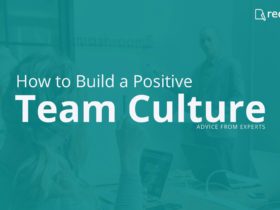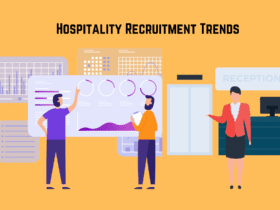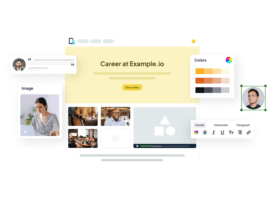Employee Referrals are 4x more likely to be hired. As reported, employee referral programs are the most effective way to recruit cream-quality candidates. Reason?


- You find candidates who are likely cultural fit
- There are very less chances of referral candidates leaving the job
- Referral programs with attractive incentives boost their motivation
Amid ongoing labor shortages, employee referral programs are proving to be powerful tools for recruiting new talent. Studies have consistently shown that tapping into your employees’ networks can result in lower recruiting costs, improved hiring rates, and longer employee retention.
What are Employee Referrals?
Employee referrals are when current employees recommend or refer people they know, such as friends or acquaintances, for job openings within their organization. This can be a way for companies to find potential new hires through the network of their existing staff.
Precisely, employee referrals are an act of word-of-mouth. Word-of-mouth as a recruitment source is defined as interpersonal communication about an organization as an employer or about specific jobs, that are not under the direct control of the organization
As observed in research, the driving factors of employee referrals are:
a) Job satisfaction is positively associated with making positive employee referrals.
b) The desire to help job seekers find good-fitting jobs is positively associated with perks and benefits for current employees.
As per the study by Jobvite, referral hires have greater job satisfaction and stay longer at companies – 46% stay over 1 year, 45% over 2 years and 47% over 3 years.
“By working to attract referrers from a wider range of backgrounds and specialty areas, we think the odds of making referrals of more diverse candidates grows.” Ryan Agresta, CEO and founder of Candidate
However, the effectiveness of employee referral programs depends significantly on the technology platform used to manage them.
This takes us to the next fold of employee referral, where you need to understand how to establish a robust and seamless employee referral system that is not only limited to the office’s four walls.
How Technology Supercharges Employee Referral Programs
The success of your employee referral program hinges on choosing the right technology platform. Outdated systems or ones lacking essential automated tools can lead to lower employee participation, increased manual work for recruiters, and even conflict with diversity, equity, and inclusion (DE&I) initiatives. Let’s explore how technology can fuel your employee referral process and what sets the best platforms apart.
1. Keep Employees Informed
One of the most significant frustrations employees face in referral programs is not knowing the status of their referrals. They want to be kept in the loop, from knowing if their referral has been received to tracking the progress of their referred candidate through the hiring process. A robust platform should automate communication and keep employees updated on the status of their referrals.
2. Build a Seamless Integration with the ATS
A seamless integration with your Applicant Tracking System (ATS) is the foundation of an effective referral platform. Recruiters should be able to effortlessly manage referrals within the ATS, eliminating the need to toggle between multiple systems. This integration streamlines the process and ensures a cohesive experience for recruiters.
3. Provide Referral Recommendations
Not all employees have the time or insights to identify the best candidates in their networks. Here’s where automation and artificial intelligence (AI) come into play. AI-driven tools can scan employee networks and pinpoint the best matches for job openings. These “recommendation engines” simplify the process for employees and supercharge the recruitment process.
4. Mobile-First Design and Flexible Options
Today’s referral platforms should be designed with a mobile-first approach, making it easy for employees to refer candidates via text or email from their phones. This approach is especially crucial for expanding referrals to blue-collar positions where mobile devices are the primary means of communication. Additionally, platforms should offer flexible referral options, allowing employees to share job openings using various channels, such as text, social media, or email.
5. Boost Employee Participation with Rewards and Gamification
To keep employees engaged in your referral program, consider offering micro-rewards and gamification strategies. These incentives go beyond the traditional referral bonus and reward employees for participating and actively sharing job openings with their networks. It’s an effective way to maintain employee motivation and enthusiasm.
6. Automatic Onboarding
Platforms that automatically onboard newly hired employees into referral programs can jump-start the referral process. Research shows that new hires are most likely to make referrals. By promptly enrolling them in the program and explaining its benefits, you can increase employee participation from day one.
7. Solving Conflicts Between Referral Programs and DE&I Initiatives
Employee referral programs have faced criticism for potentially hindering diversity efforts. Employees tend to refer individuals similar to themselves, which can limit candidate diversity. To address this, engage with employee resource groups (ERGs) to build a referral program that promotes diversity. Encourage employees to think inclusively when making referrals and offer incentives for diverse referrals.
Employee referral programs, when powered by the right technology platform, can be a game-changer for your recruitment efforts.
Employee Referral Programs Examples
Recruiters are referral program pros, but let’s face it, most employees are in the dark about it. They might not even know what jobs are up for grabs beyond their team. Big issue!
Employee referrals rock for hiring – cost-effective and top-notch candidates. But, folks don’t refer much because it doesn’t cross their minds. Before you skip the idea of employee referral, here are a few examples of how your organization can also integrate employee referral programs.
- Cred Coins on Referral (Cred): Cred (a fintech startup,) isn’t just rewarding referrals; it’s turning the game up a notch. With “Cred Coins,” they’ve gamified the process, making it a thrilling challenge for employees. It’s like turning referrals into a treasure hunt, where employees earn coins they can’t wait to spend. Cred gets that it’s not just about rewards; it’s about making work feel like an adventure.


- Goibibo Travel Credits: Goibibo is travel partners, knows how to speak the language of its employees – travel! By offering travel credits, they’re saying, “Hey, go on that dream vacation, and bring some awesome people into our team while you’re at it.” It’s a win-win that appeals to the wanderlust in everyone. Work hard, travel harder – that’s the Booking.com way.


- Netflix’s “Who Do You Know?” Campaign: Netflix keeps it personal. They get that your strongest connections are your secret weapons. So, they’re not just asking for referrals; they’re asking, “Who’s your ride-or-die in the industry?” It’s like bringing your trusted allies into a mission. Netflix knows that referrals aren’t just about skills; they’re about trust and collaboration.
- Accenture’s Referral Raffle: Accenture isn’t just running a referral program; they’re throwing a referral party! It’s like a lottery where you have a chance to win epic prizes while helping your buddies join the team. They’ve turned referrals into an exciting game of chance. Who wouldn’t want to roll the dice with a referral?


- Microsoft’s Charity Donation Matching: Microsoft isn’t just about software; it’s about making the world better. With donation matching, they’re saying, “Refer, and let’s change lives together.” It’s like turning referrals into acts of kindness. You’re not just bringing talent; you’re bringing hope. Microsoft knows that it’s not just about work; it’s about making an impact.
4 Benefits of Employee Referral Program
Finding and attracting top talents is hard. Traditional recruitment strategies are dead, modern employees outsmart traditional techniques. Employee referral program is a proven result-driven approach. Hence, here are 4 benefits of an employee referral program that retains employee, & promote a healthy work culture.
- You get wider talent pool net
ERPs use the connections of your current employees to find potential candidates. It’s like getting access to a bigger pool of talent, including those who aren’t actively looking for jobs but might be interested in a great opportunity, especially if it comes from someone they trust.
With ERPs, you’re not just looking for skills; you’re looking for the right fit. When an employee recommends someone, it’s a sign that they not only have the right skills but also match your company’s culture. These referred candidates are often top-notch and a perfect match for your team.
- More Trust, More Retention
It is highly observed that a troop of people who know each other or completed their education together working in same organization are more likely compatible. Candidates referred by current employees often align better with the company’s values and work culture. They’re like insiders who already know the lay of the land. This not only boosts job satisfaction but also substantially increases the likelihood of retaining them in the long run.
ERPs are a win-win; both for new hires and current employees. They not only help you find the right talent but also nurture trust within your existing team. When your employees actively participate in the hiring process, they become champions of your organization’s growth, leading to lower turnover rates and a happier, more engaged workforce.
| “Having a referral program is a credible signal to employees that the company trusts its workers to make suggestions,” says Hoffman. |
- Speedy and cost-effective hiring
- Referred candidates often already know the hiring and onboarding drill, thanks to your current employees. This means you can access their profiles and contact details swiftly and bring them on board faster. Speedier hiring isn’t just about saving time and money; it’s also about creating a better experience for candidates.
Candidate Experience is a top HR metric. When you hire more swiftly, you also spend less. You require fewer human hours to fill a position, which boosts the efficiency of your hiring strategy. Additionally, if you’ve noticed that referrals tend to be top-notch employees, you can cut costs by reducing spending on other, less effective sources like job boards.
- Elevate Employer Brand Image
Referred employees become ambassadors for your brand. They share their positive experiences with friends and colleagues, creating a ripple effect of positive word-of-mouth marketing. An effective employee referral program sets you apart as an employer of choice. It signals to the market that your employees are so satisfied that they actively bring in others, bolstering your reputation as a desirable place to work.
Final Words
Employee referrals help you create a talent pool of potential candidates who are already interested in your company. Even if you don’t have a specific job opening at the moment, having a list of interested and qualified individuals can be a strategic advantage when you do need to hire.
Ready to Harness the Power of Employee Referral Programs?
When it comes to hiring quickly and cost-effectively, referred candidates are your go-to solution. It’s time to tap into your employees’ social networks and encourage them to recommend ideal candidates for your job openings.
To know About “How to Build a Employee Referral Program“: Read our In depth article that completely focuses on building and Employee Referral Program.


